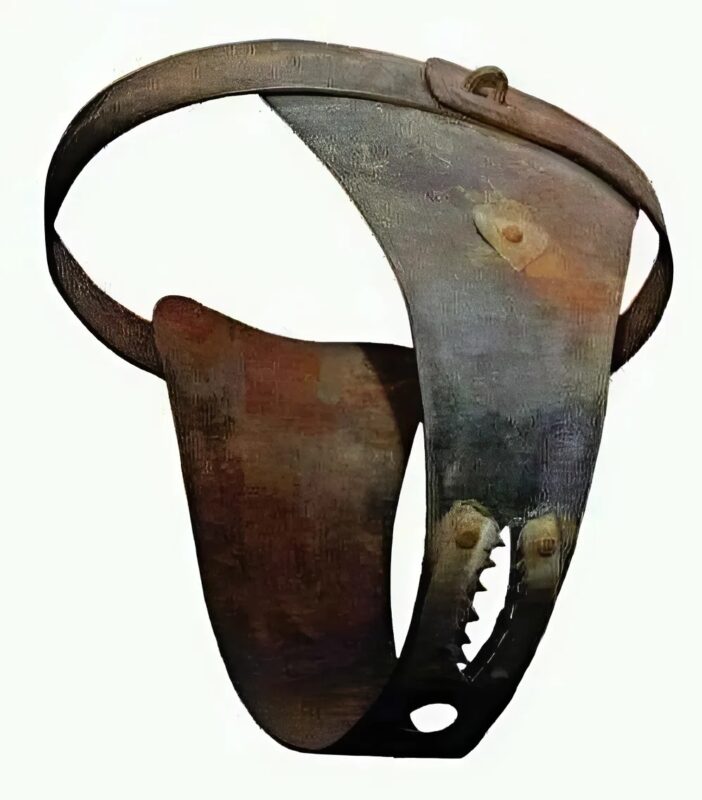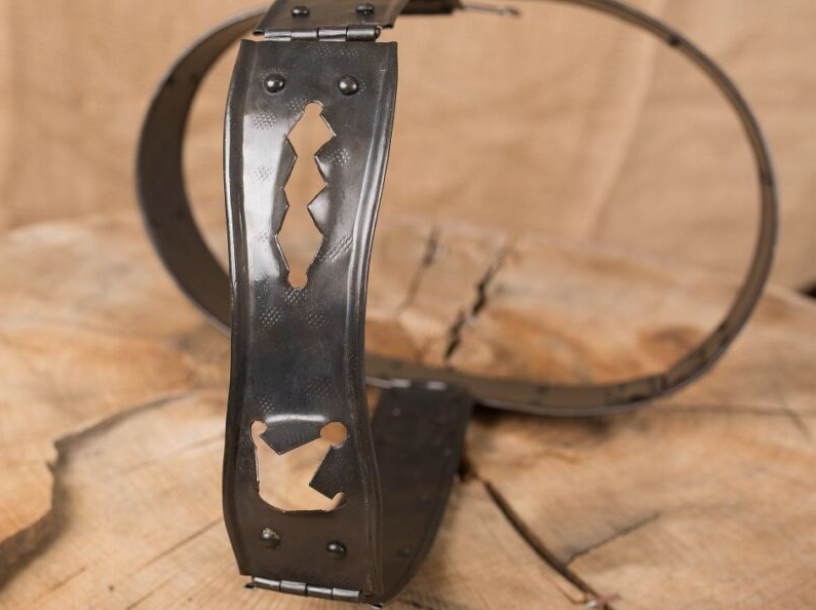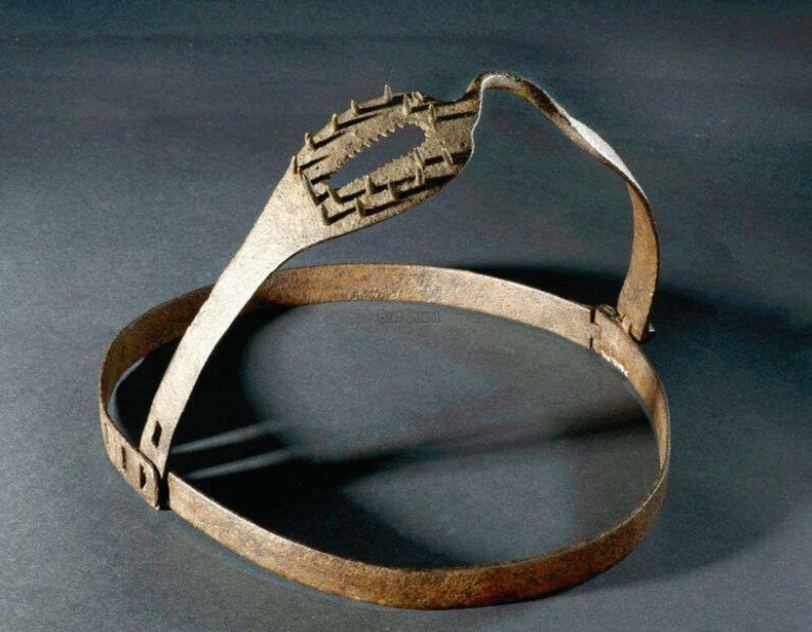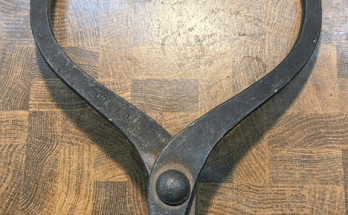Imagine living in an era where a simple key represented not just access but power, loyalty, and control. In the medieval world, keys were more than just tools for securing doors or treasure chests—they symbolized trust, commitment, and sometimes oppression.
Knights embarking on crusades entrusted their households to caretakers, but some allegedly took extreme measures to ensure their wives remained faithful during their absence. This is where the infamous chastity belt legend enters the picture, a concept that still fascinates and horrifies people today.
But how much truth is there to this story? Were these devices truly common, or are they more of a myth shaped by fear and exaggeration? Let’s unravel the secrets behind medieval keys and the controversial chastity belt.

Chastity Belts: The Myth of Forced Fidelity
Chastity belts are often depicted as iron-clad devices locked around a woman’s waist, designed to prevent sexual relations in her husband’s absence. The key to unlocking them was supposedly kept by the husband, a symbol of his control over her body and fidelity.
But did these belts truly exist in medieval times? The answer is far more complicated than popular belief suggests.
1. A Story Rooted in Fear and Control
The idea of chastity belts fits well into the narrative of medieval male dominance, where women were often seen as the property of their husbands. However, many historians argue that there is little concrete evidence that chastity belts were widely used.
Most physical examples of these belts date back to the 16th and 17th centuries, and many were likely created as torture devices or later inventions inspired by exaggerated medieval stories. Some scholars even suggest that they were more of a joke or symbolic representation of purity than a real medieval practice.
2. The Reality of Medieval Hygiene and Health
Even if some form of chastity belt did exist, one major issue arises—hygiene.
- Medieval people did not bathe frequently, and the concept of modern sanitation was non-existent.
- Wearing a metal device for long periods would have caused severe infections, sores, and even life-threatening complications.
- Given the lack of medical knowledge, such injuries could have led to serious health risks, making the long-term use of a chastity belt highly impractical.
These factors suggest that if chastity belts were real, they were not commonly worn for extended periods, if at all.

Medieval Hygiene: A Harsh Reality
The hygiene practices of the Middle Ages were vastly different from today’s standards. Cleanliness was often linked to social class, religious beliefs, and regional customs.
1. The Rarity of Baths
While some medieval societies promoted bathing, others believed that too much exposure to water could lead to disease. This belief stemmed from outbreaks of the plague, where some thought that open pores from warm water could allow sickness to enter the body.
For most medieval people, hygiene meant:
- Wiping the body with damp cloths rather than taking full baths.
- Using herbs and scented oils to mask odors.
- Bathing only for special occasions, such as before a wedding or during a religious festival.
2. The Challenge of Women’s Hygiene
For women, maintaining hygiene was particularly difficult. Without access to modern sanitation products, they relied on linen cloths, wool pads, or even moss during menstruation.
The idea of a chastity belt worn for months or years raises serious practical concerns—how could a woman perform even the most basic hygiene practices with a locked metal device restricting her movements?
This is one of the strongest arguments against the widespread use of chastity belts.

Keys and Control: More Than Just Chastity Belts
Beyond the questionable history of chastity belts, keys held great symbolic power in medieval times.
1. The Key as a Symbol of Trust
In medieval households, the mistress of the house often carried a set of keys, symbolizing her responsibility over the estate. This role was one of great honor and trust, allowing her to manage the food stores, valuables, and even the daily operations of the home.
In contrast, knights and noblemen carried keys to treasure chests, armories, and secret chambers, representing their power and authority. A key was not just an object—it was a representation of status and control.
2. The Hidden Role of Women in Power
While medieval women were often restricted by laws and customs, they were not entirely without influence. Many noblewomen were entrusted with estates while their husbands were away, handling finances, trade agreements, and even political negotiations.
In some cases, women used their access to keys to defy expectations—unlocking forbidden doors, protecting family secrets, or even securing their own freedom.

Were Chastity Belts Real or Just a Scare Tactic?
So, were chastity belts actually used, or were they just a legend created to intimidate women and reinforce male dominance?
1. The Lack of Medieval Records
Despite the popular belief that these devices were common, there are very few actual medieval references to chastity belts. The first written mention appears in the 15th century, and most surviving examples come from the Renaissance or later periods.
2. A Tool for Moral Control?
Some historians believe chastity belts were not physically worn but rather used as a symbol of virtue and purity. The mere idea of their existence could have been enough to discourage women from disloyalty, serving as a psychological tool rather than a physical restraint.
3. The Influence of Victorian-Era Myths
During the 19th century, Victorians were fascinated with medieval life and often romanticized or exaggerated its customs. Many chastity belts found in museums today are believed to be Victorian reproductions, meant to illustrate medieval morality rather than reflect historical reality.
Conclusion: Unlocking the Truth Behind Medieval Myths
The story of chastity belts, medieval keys, and the struggle for control reveals more about society’s fears and desires than actual historical practices.
- While keys represented power, authority, and trust, their connection to chastity belts may be more fiction than fact.
- The lack of hygiene, medical risks, and absence of real medieval evidence make it unlikely that chastity belts were widely used.
- Instead, they may have been a tool of fear and moral control, reinforcing expectations of female purity rather than acting as a literal device.
Ultimately, the secrets of medieval life go beyond metal locks and keys—they tell a larger story about power, trust, and the struggle for autonomy in a world dominated by rigid societal norms.
While modern historians continue to debate the truth about chastity belts, one thing remains clear: the Middle Ages were far more complex, mysterious, and fascinating than we often realize.




